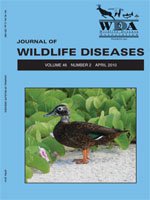Sin Nombre virus (SNV), one of at least 45 hantaviruses described worldwide, is hosted by the deer mouse, Peromyscus maniculatus, a common species throughout most of North America. Herein, we describe general life-history characteristics of deer mice and the ways in which these factors relate to the incidence of SNV infections among populations of this host species in and around Portland, Oregon. In total, 3,175 deer mice were captured from October 2002 to September 2005. Transmission of SNV appears to be associated with male breeding behaviors, as more males and adults were infected than expected by capture rate; spring and summer had the highest infection prevalence, as well as scrotal male captures. Wounding rates between infected and uninfected deer mice were not different in any age or sex class. Capture rates were significantly and positively related to the interaction of temperature departure from normal, total precipitation, and number of clear days from two seasons previous (P=0.029), while infection prevalence was significantly and negatively related to the capture rate of juveniles from two seasons previous (P=0.029).
How to translate text using browser tools
1 April 2010
NATURAL HISTORY OF SIN NOMBRE VIRUS INFECTION IN DEER MICE IN URBAN PARKS IN OREGON
Laurie Dizney,
Philip D. Jones,
Luis A. Ruedas
ACCESS THE FULL ARTICLE

Journal of Wildlife Diseases
Vol. 46 • No. 2
April 2010
Vol. 46 • No. 2
April 2010
deer mouse
infection prevalence
Peromyscus maniculatus
Sin Nombre virus
zoonotic disease





